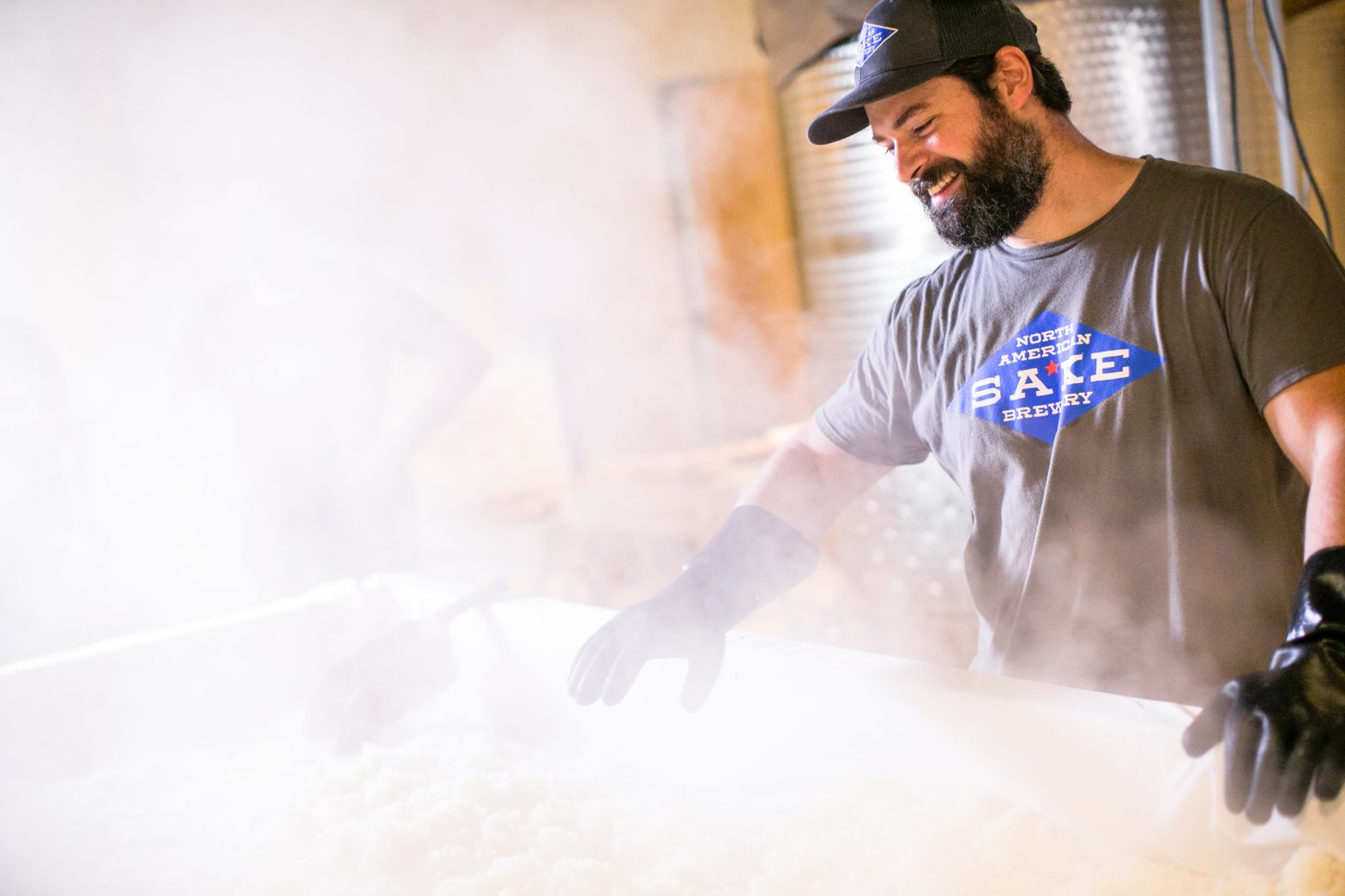Sake is believed to have originated in Japan approximately 2,000 years ago. As with many alcoholic beverages, it was refined as part of religious ceremonies, and commercial brewing of the rice-based beverage began in the 14th century. Although recent advances have allowed for automation and large-volume production, high-quality sake is still mostly made by hand, using techniques passed down from toji (master brewers) to apprentices through the centuries.
In the United States, sake is still largely ignored or misunderstood. For many, its mention causes flashbacks to the ’70s and ’80s, when poor-quality sake was served warm (to hide flaws) at hibachi-grill restaurants like Benihana. For a country that loves craft anything, Americans have yet to fully realize that high-quality sake is perhaps the most craft of craft beverages.
For Andrew Centofante, owner and toji at North American Sake Brewery, it took a trip to Japan and a chance meeting with an English-speaking bartender who loved sake, to realize this oversight. An avid homebrewer and self-described lover of “all kinds of craft beer, wine, cider, and spirits,” Centofante was immediately impressed by the delicious and nuanced flavors of sake. Upon returning, he sought out more sake but quickly became fixated on brewing his own at home.
“The more I learned, the more I fell in love with the process…before long I had transformed my basement into a small-scale sake brewery,” Centofante says. “And then my wife was like, ‘What are you doing?!’”
For many, a hobby that disturbs family harmony might have stopped right there. For Centofante, it led to a trip back to Japan, an apprenticeship under a sixth-generation sake brewer, and then, three years ago, the opening of his own sake brewery at IX Art Park. From the outset, NAS has produced sake using a traditional, hands-on, and time-consuming process that honors historical roots. At the same time, NAS is trying to appeal to an American market.
While he easily admits the process is one of constant learning, Centofante is adamant that the goal is to produce sake that is competitive with, or even better than, other sakes—including those from Japan. He also sees an opportunity to create more sake drinkers by making it more accessible and increasing consumer knowledge. Therefore, NAS intentionally has a less formal atmosphere that allows consumers to relax and have fun while they learn more about the nuances of technique and flavor that are a big part of sake.
After the brewery opened, Centofante quickly realized that serving food would be an integral part of the experience. He admits, “Food was not always part of the plan, but we also knew that we needed people to taste it in order for them to get it.” The NAS kitchen now serves a Japanese menu with ramen, rice bowls, sushi, and dumplings.
To produce high-quality sake in the United States, especially brews that can rival those coming out of Japan, is no small task. Not only is NAS itself relatively young, but the entire industry outside of Japan is in its infancy. So, Centofante founded the Sake Brewers Association of North America, a nonprofit for which he serves as chairman of the board. The organization is dedicated to bringing the brewing community together, including forging relationships with both the Japanese and United States governments. “A rising tide lifts all ships and I believe that if you enjoy great sake brewed in Cincinnati or Arizona, then you will come here to NAS or pick up bottles of Japanese sake when you see it,” Centofante says.
Seemingly content in this place of tension between honoring ancient tradition while also looking forward to a modern future, Centofante says, “Sake, even though it is ancient, is an incredibly modern drink with so much technical precision, artistry, and innovation happening in Japan and abroad. We are lucky to be part of something so special.”
Style bar
North American Sake Brewery intentionally brews a lineup that showcases different styles of sake. Here are a few of note:
Real Magic: Junmai (brewed only with rice with no addition of alcohol beyond what is produced by fermentation). Not heavily milled, the retention of 70 percent of the rice grain yields flavors of pear and apple accompanying a round mouthfeel and long savory finish.
Big Baby: Unfiltered and cloudy with flavors of melon and banana. NAS uses calrose rice, a sushi
rice grown in the United States,
and this gives the drinker a real sense of how that rice tastes.
Serenity Now!: Junmai, but also daiginjo (the rice has been polished down to less than 50 percent of its original size), which results in a sake lighter in body, more aromatic, and full of fruit flavors.
